Improved Uncalibrated Visual Servo Strategy for Hyper-Redundant Manipulators in On-Orbit Automatic Assembly
Abstract
Featured Application
Abstract
1. Introduction
2. Projective Homography
3. Improved Strategy for the Uncalibrated Visual Servo of a Hyper-Redundant Space Manipulator
3.1. Improved Homography-Based Task Function
- Translate the feature points as and to ensure that the centroid of these feature points is at the origin;
- Scale feature points as and to make their average distance from the origin equal to .
- Necessity proof: If and , then . On the basis of the similarity of and , we obtain . From Equation (8), we obtain . The constraint gives ; i.e., , , and .
- Sufficiency: It is obvious that and if . From Equation (7), we have
3.2. Online Estimation of Total Jacobian
- Calculate the a priori state space:
- Calculate the a priori state error covariance matrix:
- Calculate the residuals vector:
- Calculate the smoothing boundary layer :where and are the process noise covariance matrix and measurement noise covariance matrix, respectively; is the diagonal matrix constructed with ; and the calculated optimal boundary layer of the uncalibrated visual servo system is the diagonal matrix .
- Compare the calculated boundary layer with the threshold , which is based on the specific conditions of the system, and switch the appropriate filter gain:If , the KF gain is switched to provide an optimal estimate:If , the SVSF gain is switched to provide a robust estimate:where is the standard boundary layer in SVSF, and this can be adjusted according to the diagonal elements of the calculated smoothing boundary layer matrix .
3.3. Controller Design
- Static positioning controller:where is the processed total Jacobian in the period and is the proportional gain.
- Dynamic tracking controller:where is the estimation of the task function variation in the period caused by target movement.
4. Simulations
4.1. System Description
4.2. Simulations and Discussions of Aligning with Static Assembly Objects
4.3. Simulations and Discussions of Aligning with Dynamic Assembly Objects
5. Experiments
5.1. Evaluation of Real-Time Performance
5.2. Evaluation of System Performance
5.2.1. Static Positioning Experiment
5.2.2. Dynamic Tracking Experiment
6. Conclusions
Author Contributions
Funding
Acknowledgments
Conflicts of Interest
References
- Hippler, S. Adaptive Optics for Extremely Large Telescopes. J. Astron. Instrum. 2019, 8, 1–21. [Google Scholar] [CrossRef]
- Stolfi, A.; Angeletti, F.; Gasbarri, P.; Panella, M. A Deep Learning Strategy for On-Orbit Servicing Via Space Robotic Manipulator. Aerotec. Missili Spaz. 2019, 98, 273–282. [Google Scholar] [CrossRef]
- Chen, G.; Yuan, B.; Jia, Q.; Sun, H.; Guo, W. Failure Tolerance Strategy of Space Manipulator for Large Load Carrying Tasks. Acta Astronaut. 2018, 148, 186–204. [Google Scholar] [CrossRef]
- Li, W.-J.; Cheng, D.-Y.; Liu, X.-G.; Wang, Y.-B.; Shi, W.-H.; Tang, Z.-X.; Gao, F.; Zeng, F.-M.; Chai, H.-Y.; Luo, W.-B.; et al. On-Orbit Service (OOS) of Spacecraft: A Review of Engineering Developments. Prog. Aerosp. Sci. 2019, 108, 32–120. [Google Scholar] [CrossRef]
- Flores-Abad, A.; Ma, O.; Pham, K.; Ulrich, S. A Review of Space Robotics Technologies for on-Orbit Servicing. Prog. Aerosp. Sci. 2014, 68, 1–26. [Google Scholar] [CrossRef]
- Xu, W.; Liang, B.; Xu, Y. Survey of Modeling, Planning, and Ground Verification of Space Robotic Systems. Acta Astronaut. 2011, 68, 1629–1649. [Google Scholar] [CrossRef]
- Menon, C.; Busolo, S.; Cocuzza, S.; Aboudan, A.; Bulgarelli, A.; Bettanini, C.; Marchesi, M.; Angrilli, F. Issues and Solutions for Testing Free-Flying Robots. Acta Astronaut. 2007, 60, 957–965. [Google Scholar] [CrossRef]
- Stolfi, A.; Gasbarri, P.; Sabatini, M. A Parametric Analysis of a Controlled Deployable Space Manipulator for Capturing a Non-Cooperative Flexible Satellite. Acta Astronaut. 2018, 148, 317–326. [Google Scholar] [CrossRef]
- Chen, H.; Huang, P.; Liu, Z.; Ma, Z. Time Delay Prediction for Space Telerobot System with a Modified Sparse Multivariate Linear Regression Method. Acta Astronaut. 2020, 166, 330–341. [Google Scholar] [CrossRef]
- Larouche, B.P.; Zhu, Z.H. Autonomous Robotic Capture of Non-Cooperative Target Using Visual Servoing and Motion Predictive Control. Auton. Robot. 2014, 37, 157–167. [Google Scholar] [CrossRef]
- Dong, G.; Zhu, Z.H. Predictive Visual Servo Kinematic Control for Autonomous Robotic Capture of Non-Cooperative Space Target. Acta Astronaut. 2018, 151, 173–181. [Google Scholar] [CrossRef]
- Rivolta, A.; Lunghi, P.; Lavagna, M. GNC & Robotics for on Orbit Servicing With Simulated Vision in the Loop. Acta Astronaut. 2019, 162, 327–335. [Google Scholar] [CrossRef]
- Dong, G.; Zhu, Z.H. Position-Based Visual Servo Control of Autonomous Robotic Manipulators. Acta Astronaut. 2015, 115, 291–302. [Google Scholar] [CrossRef]
- Bottin, M.; Cocuzza, S.; Comand, N.; Doria, A. Modeling and Identification of an Industrial Robot with a Selective Modal Approach. Appl. Sci. 2020, 10, 4619. [Google Scholar] [CrossRef]
- Wang, N.; He, H. Adaptive Homography-Based Visual Servo for Micro Unmanned Surface Vehicles. Int. J. Adv. Manuf. Technol. 2019, 105, 4875–4882. [Google Scholar] [CrossRef]
- Assa, A.; Janabi-Sharifi, F. Virtual Visual Servoing for Multicamera Pose Estimation. IEEE/ASME Trans. Mechatron. 2015, 20, 789–798. [Google Scholar] [CrossRef]
- Colombo, F.T.; Fontes, J.V.D.C.; Da Silva, M.M. A Visual Servoing Strategy Under Limited Frame Rates for Planar Parallel Kinematic Machines. J. Intell. Robot. Syst. 2019, 96, 95–107. [Google Scholar] [CrossRef]
- Li, S.; Li, D.; Zhang, C.; Wan, J.; Xie, M. RGB-D Image Processing Algorithm for Target Recognition and Pose Estimation of Visual Servo System. Sensors 2020, 20, 430. [Google Scholar] [CrossRef]
- Cai, C.; Somani, N.; Nair, S.; Mendoza, D.; Knoll, A. Uncalibrated Stereo Visual Servoing for Manipulators Using Virtual Impedance Control. In Proceedings of the 13th International Conference on Control Automation Robotics & Vision (ICARCV), Singapore, 10–12 December 2014; pp. 1888–1893. [Google Scholar]
- Liang, X.; Wang, H.; Liu, Y.-H.; Chen, W.; Zhao, J. A Unified Design Method for Adaptive Visual Tracking Control of Robots with Eye-in-Hand/Fixed Camera Configuration. Automatica 2015, 59, 97–105. [Google Scholar] [CrossRef]
- Shademan, A.; Jägersand, M. Three-View Uncalibrated Visual Servoing. In Proceedings of the 2010 IEEE/RSJ International Conference on Intelligent Robots and Systems, Taipei, Taiwan, 18–22 October 2010; pp. 6234–6239. [Google Scholar]
- Hao, M.; Sun, Z. A Universal State-Space Approach to Uncalibrated Model-Free Visual Servoing. IEEE/ASME Trans. Mechatron. 2011, 17, 833–846. [Google Scholar] [CrossRef]
- Gong, Z.; Tao, B.; Yang, H.; Yin, Z.; Ding, H. An Uncalibrated Visual Servo Method Based on Projective Homography. IEEE Trans. Autom. Sci. Eng. 2018, 15, 806–817. [Google Scholar] [CrossRef]
- Liu, M.; Pradalier, C.; Esiegwart, R. Visual Homing from Scale with an Uncalibrated Omnidirectional Camera. IEEE Trans. Robot. 2013, 29, 1353–1365. [Google Scholar] [CrossRef]
- Ma, Z.; Su, J. Robust Uncalibrated Visual Servoing Control Based on Disturbance Observer. ISA Trans. 2015, 59, 193–204. [Google Scholar] [CrossRef]
- Gong, Z.; Tao, B.; Qiu, C.; Yin, Z.; Ding, H. Trajectory Planning with Shortest Path for Modified Uncalibrated Visual Servoing Based on Projective Homography. IEEE Trans. Autom. Sci. Eng. 2020, 17, 1076–1083. [Google Scholar] [CrossRef]
- Wang, F.; Liu, Z.; Chen, C.L.P.; Zhang, Y. Robust Adaptive Visual Tracking Control for Uncertain Robotic Systems With Unknown Dead-Zone Inputs. J. Frankl. Inst. 2019, 356, 6255–6279. [Google Scholar] [CrossRef]
- Zhang, J.; Liu, D. Calibration-Free and Model-Independent Method for High-DOF Image-Based Visual Servoing. J. Control. Theory Appl. 2013, 11, 132–140. [Google Scholar] [CrossRef]
- Musić, J.; Bonković, M.; Cecić, M. Comparison of Uncalibrated Model-Free Visual Servoing Methods for Small-Amplitude Movements: A Simulation Study. Int. J. Adv. Robot. Syst. 2014, 11, 108. [Google Scholar] [CrossRef]
- Shi, H.; Sun, G.; Wang, Y.; Hwang, K.-S. Adaptive Image-Based Visual Servoing with Temporary Loss of the Visual Signal. IEEE Trans. Ind. Inform. 2019, 15, 1956–1965. [Google Scholar] [CrossRef]
- Xiaolin, R.; Hongwen, L.; Yuanchun, L. Online Image Jacobian Identification Using Optimal Adaptive Robust Kalman Filter for Uncalibrated Visual Servoing. In Proceedings of the 2017 2nd Asia-Pacific Conference on Intelligent Robot Systems (ACIRS), Wuhan, China, 16–18 June 2017; pp. 53–57. [Google Scholar]
- Lv, X.; Huang, X. Fuzzy Adaptive Kalman Filtering based Estimation of Image Jacobian for Uncalibrated Visual Servoing. In Proceedings of the 2006 IEEE/RSJ International Conference on Intelligent Robots and Systems, Beijing, China, 9–15 October 2006; pp. 2167–2172. [Google Scholar]
- Wang, F.; Sun, F.; Zhang, J.; Lin, B.; Li, X. Unscented Particle Filter for Online Total Image Jacobian Matrix Estimation in Robot Visual Servoing. IEEE Access 2019, 7, 92020–92029. [Google Scholar] [CrossRef]
- Zhong, X.; Zhong, X.; Peng, X. Robots Visual Servo Control with Features Constraint Employing Kalman-Neural-Network Filtering Scheme. Neurocomputing 2015, 151, 268–277. [Google Scholar] [CrossRef]
- Zhou, Z.; Zhang, R.; Zhu, Z. RETRACTED: Uncalibrated Dynamic Visual Servoing via Multivariate Adaptive Regression Splines and Improved Incremental Extreme Learning Machine. ISA Trans. 2019, 92, 298–314. [Google Scholar] [CrossRef] [PubMed]
- Gu, J.; Wang, W.; Zhu, M.; Lv, Y.; Huo, Q.; Xu, Z. Research on A Technology of Automatic Assembly Based on Uncalibrated Visual Servo System. In Proceedings of the 2018 IEEE International Conference on Mechatronics and Automation (ICMA), Changchun, China, 5–8 August 2018; pp. 872–877. [Google Scholar]
- Piepmeier, J.A.; McMurray, G.V.; Lipkin, H. A Dynamic Quasi-Newton Method for Uncalibrated Visual Servoing. Proc. Int. Conf. Robot. Autom. 2003, 2, 1595–1600. [Google Scholar] [CrossRef]
- Zhao, Q.; Zhang, L.; Chen, Y. Online Estimation Technique for Jacobian Matrix in Robot Visual Servo Systems. In Proceedings of the 2008 3rd IEEE Conference on Industrial Electronics and Applications, Singapore, 3–5 June 2008; pp. 1270–1275. [Google Scholar]
- Hartley, R.; Zisserman, A. Multiple View Geometry in Computer Vision; Cambridge University Press (CUP): New York, NY, USA, 2004. [Google Scholar]
- Huang, Y.; Zhang, Y.; Wu, Z.; Li, N.; Chambers, J. A Novel Adaptive Kalman Filter With Inaccurate Process and Measurement Noise Covariance Matrices. IEEE Trans. Autom. Control 2018, 63, 594–601. [Google Scholar] [CrossRef]
- Mu, Z.; Liu, T.; Xu, W.; Lou, Y.; Liang, B. Dynamic Feedforward Control of Spatial Cable-Driven Hyper-Redundant Manipulators for on-Orbit Servicing. Robots 2018, 37, 18–38. [Google Scholar] [CrossRef]
- Chan, T.F.; Dubey, R. A Weighted Least-Norm Solution Based Scheme for Avoiding Joint Limits for Redundant Joint Manipulators. IEEE Trans. Robot. Autom. 1995, 11, 286–292. [Google Scholar] [CrossRef]
- Cocuzza, S.; Pretto, I.; Debei, S. Least-Squares-Based Reaction Control of Space Manipulators. J. Guid. Control. Dyn. 2012, 35, 976–986. [Google Scholar] [CrossRef]
- Tringali, A.; Cocuzza, S. Globally Optimal Inverse Kinematics Method for a Redundant Robot Manipulator with Linear and Nonlinear Constraints. Robots 2020, 9, 61. [Google Scholar] [CrossRef]
- Colome, A.; Torras, C. Closed-Loop Inverse Kinematics for Redundant Robots: Comparative Assessment and Two Enhancements. IEEE/ASME Trans. Mechatron. 2014, 20, 944–955. [Google Scholar] [CrossRef]
- Gadsden, S.; Habibi, S.R. A New Robust Filtering Strategy for Linear Systems. J. Dyn. Syst. Meas. Control. 2012, 135, 014503. [Google Scholar] [CrossRef]
- Gadsden, S.A.; Habibi, S.; Kirubarajan, T. Kalman and Smooth Variable Structure Filters for Robust Estimation. IEEE Trans. Aerosp. Electron. Syst. 2014, 50, 1038–1050. [Google Scholar] [CrossRef]
- Goodman, J.M.; Wilkerson, S.A.; Eggleton, C.; Gadsden, S.A. A Multiple Model Adaptive SVSF-KF Estimation Strategy. Signal Process. Sens. Inf. Fusion Target Recognit. XXVIII 2019, 11018, 110181K. [Google Scholar] [CrossRef]
- Nie, Y.; Zhang, Z.; Sun, H.-Q.; Su, T.; Li, G. Homography Propagation and Optimization for Wide-Baseline Street Image Interpolation. IEEE Trans. Vis. Comput. Graph. 2016, 23, 2328–2341. [Google Scholar] [CrossRef] [PubMed]
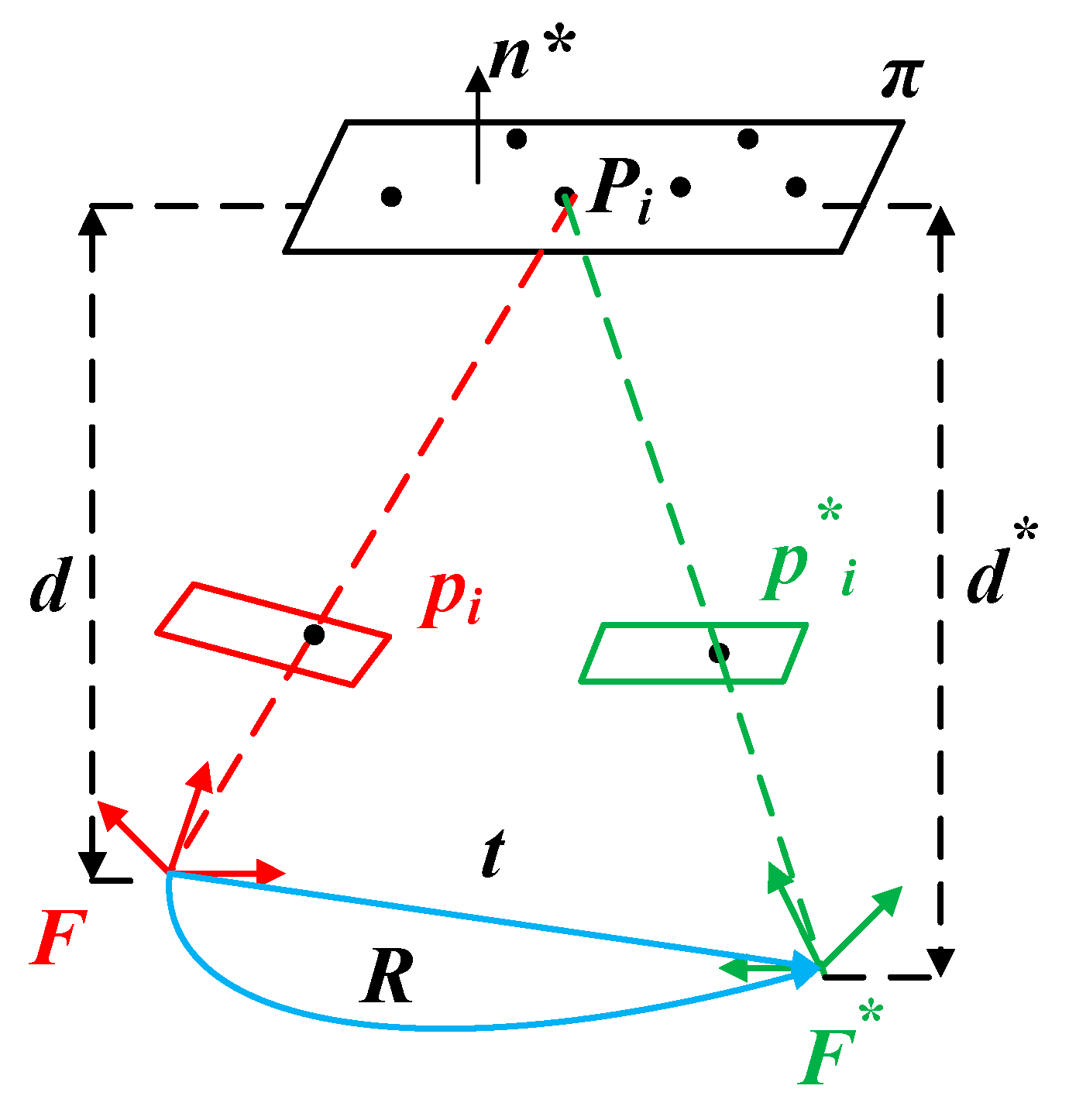
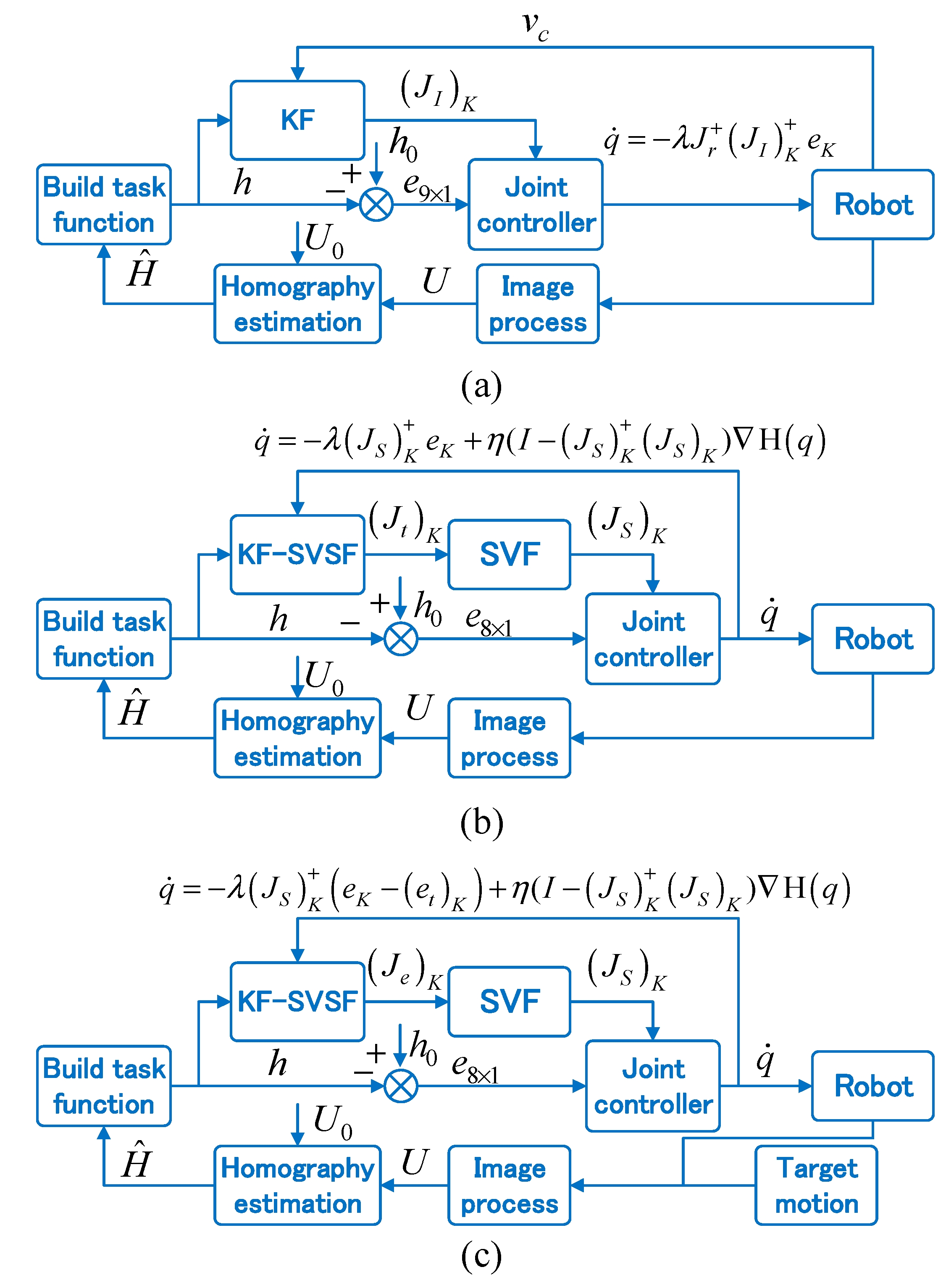
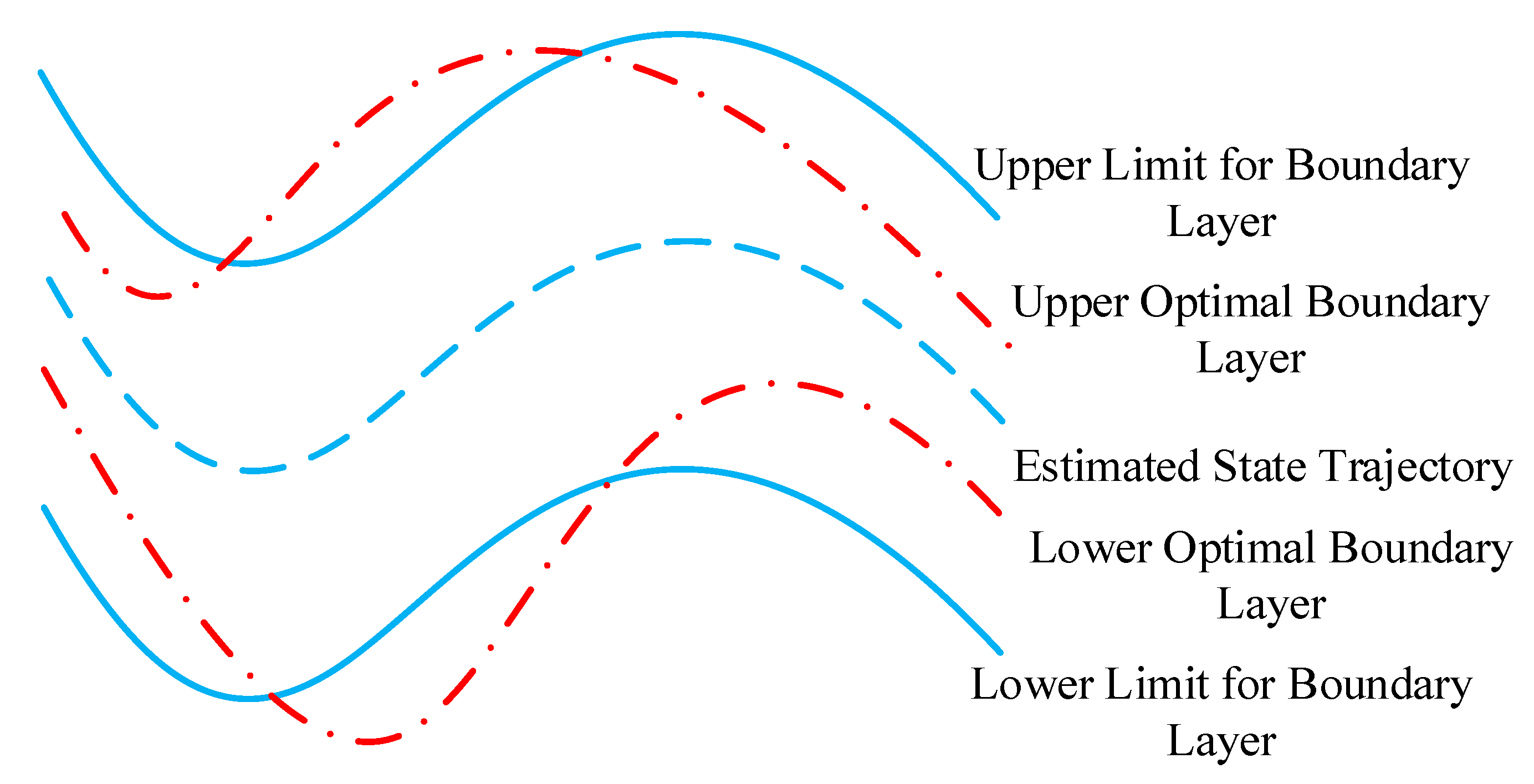
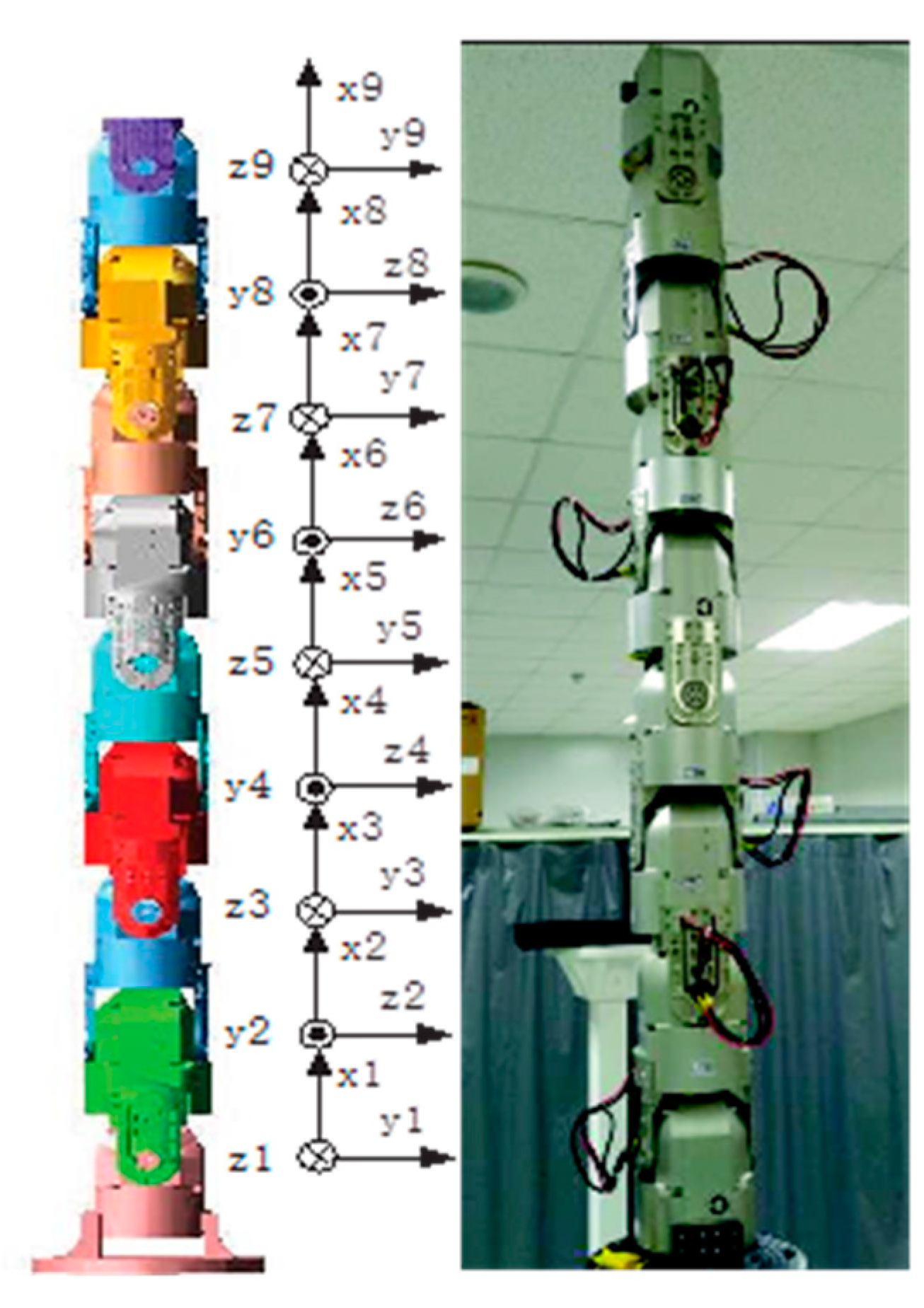
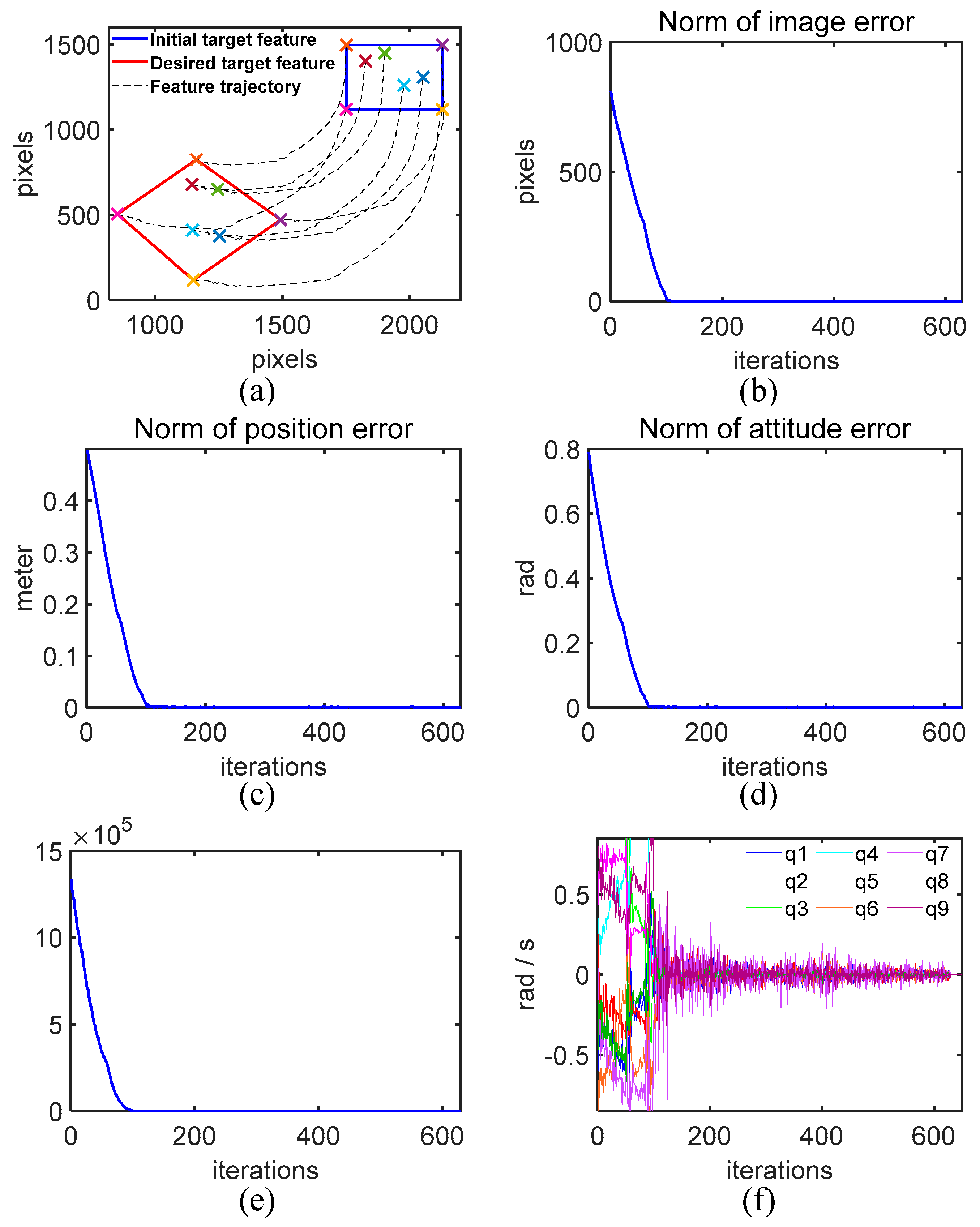
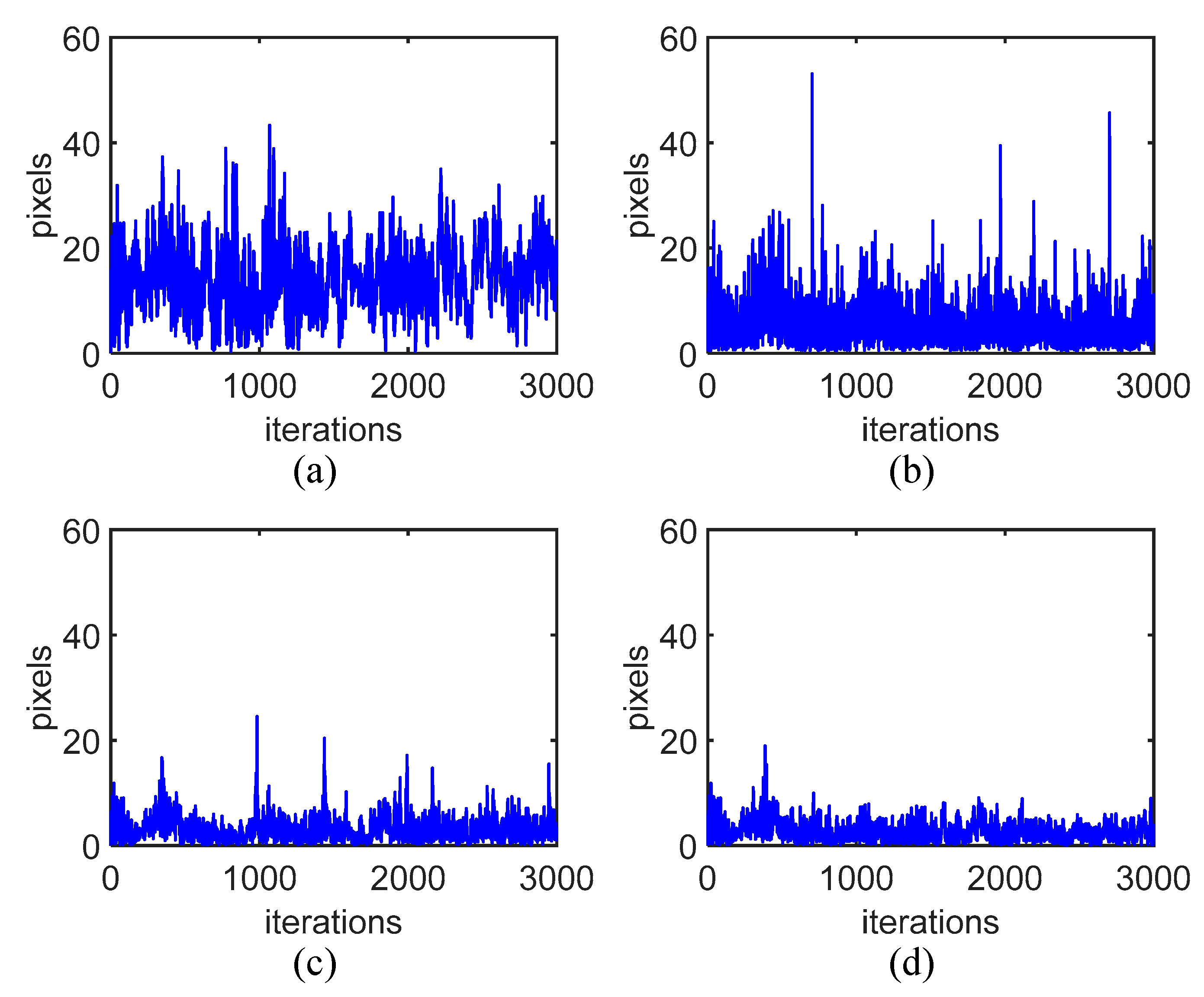
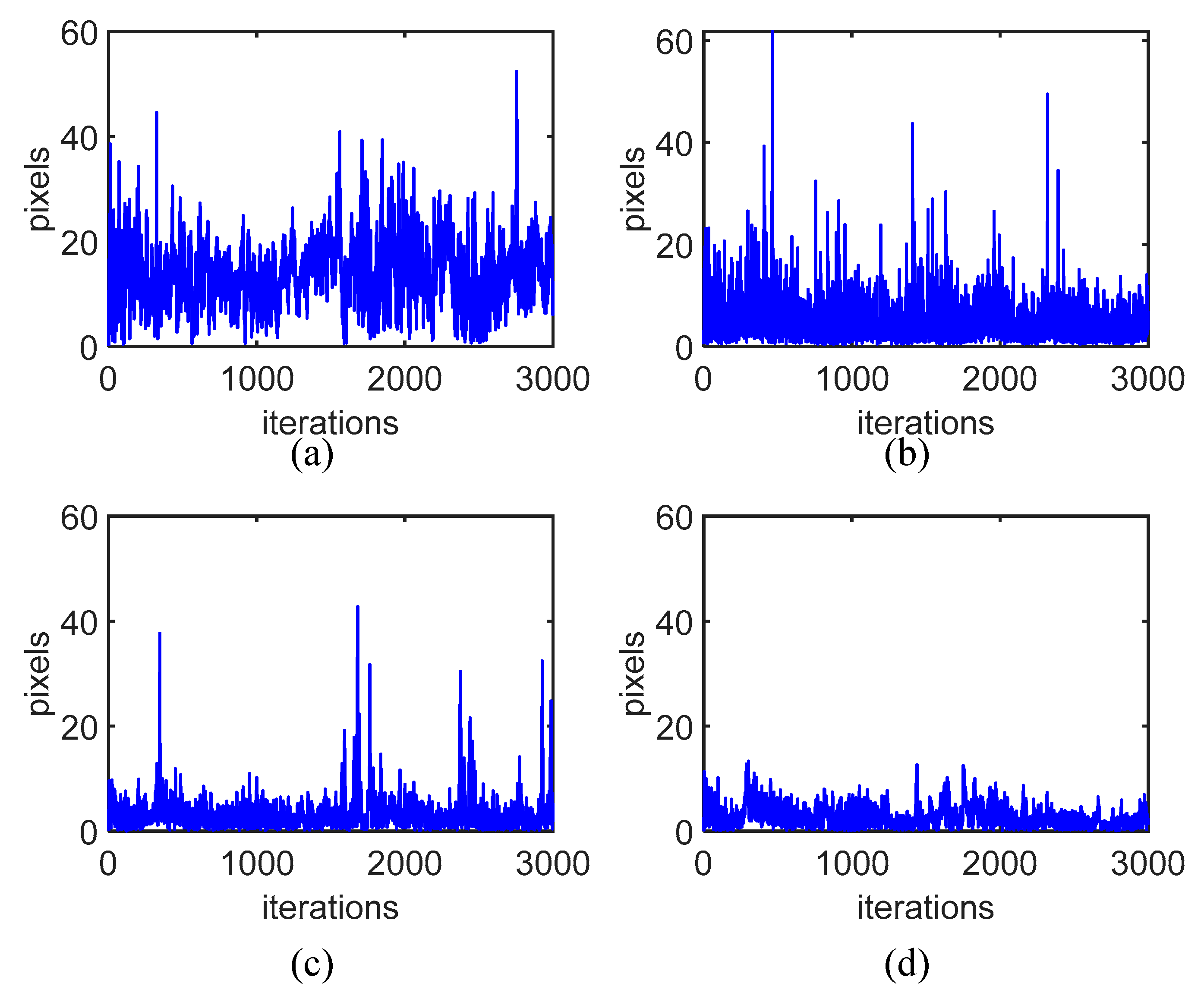
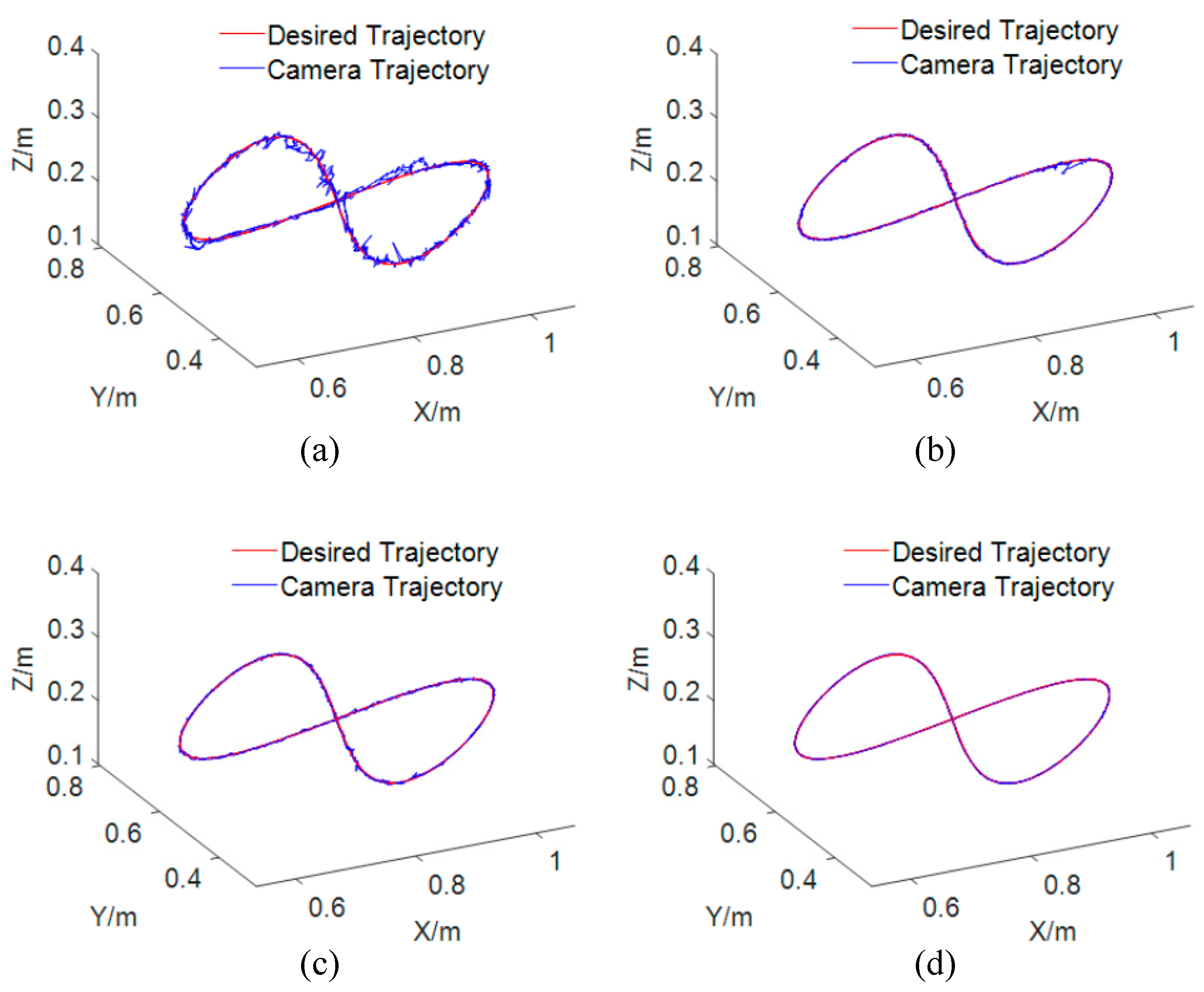
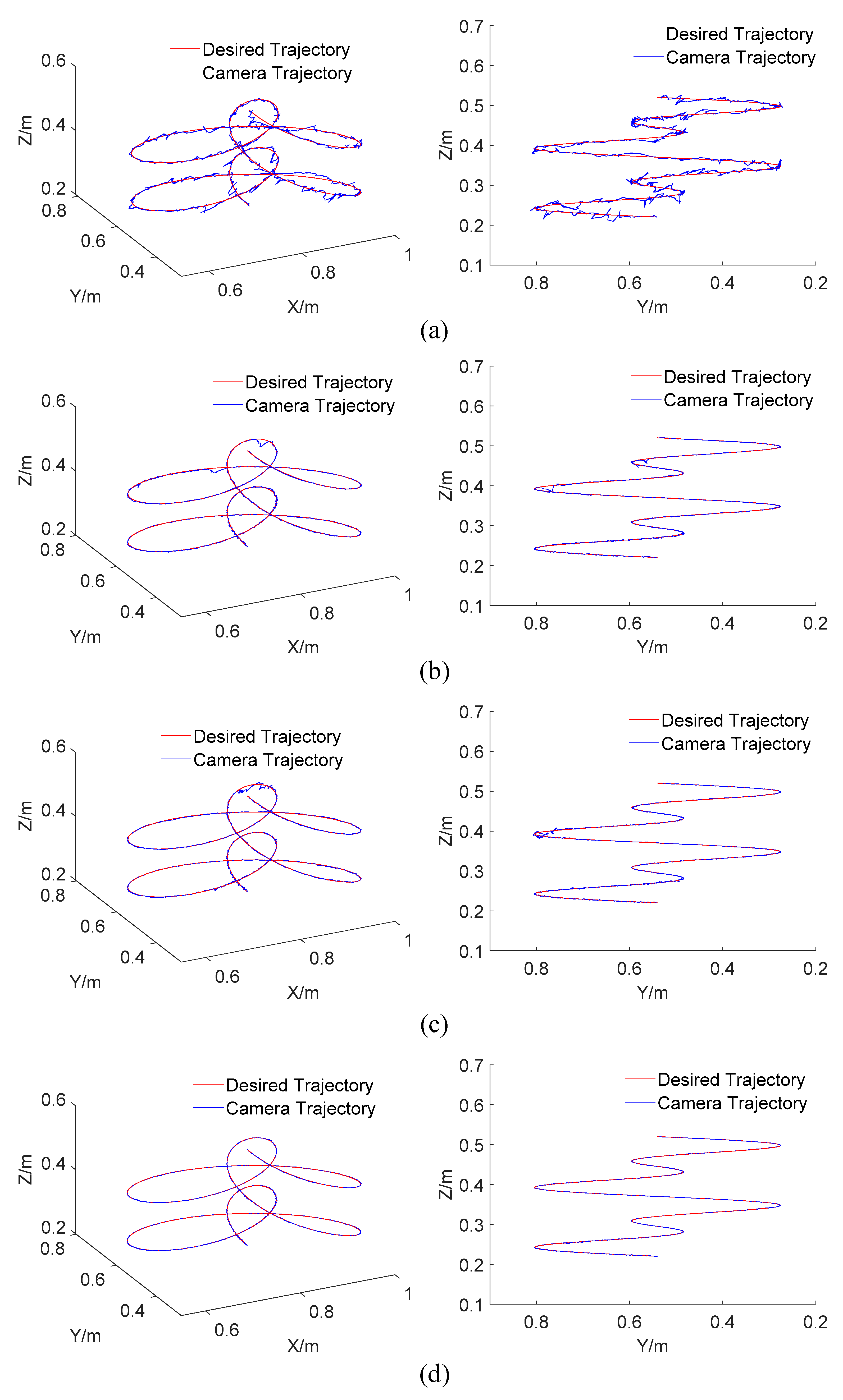
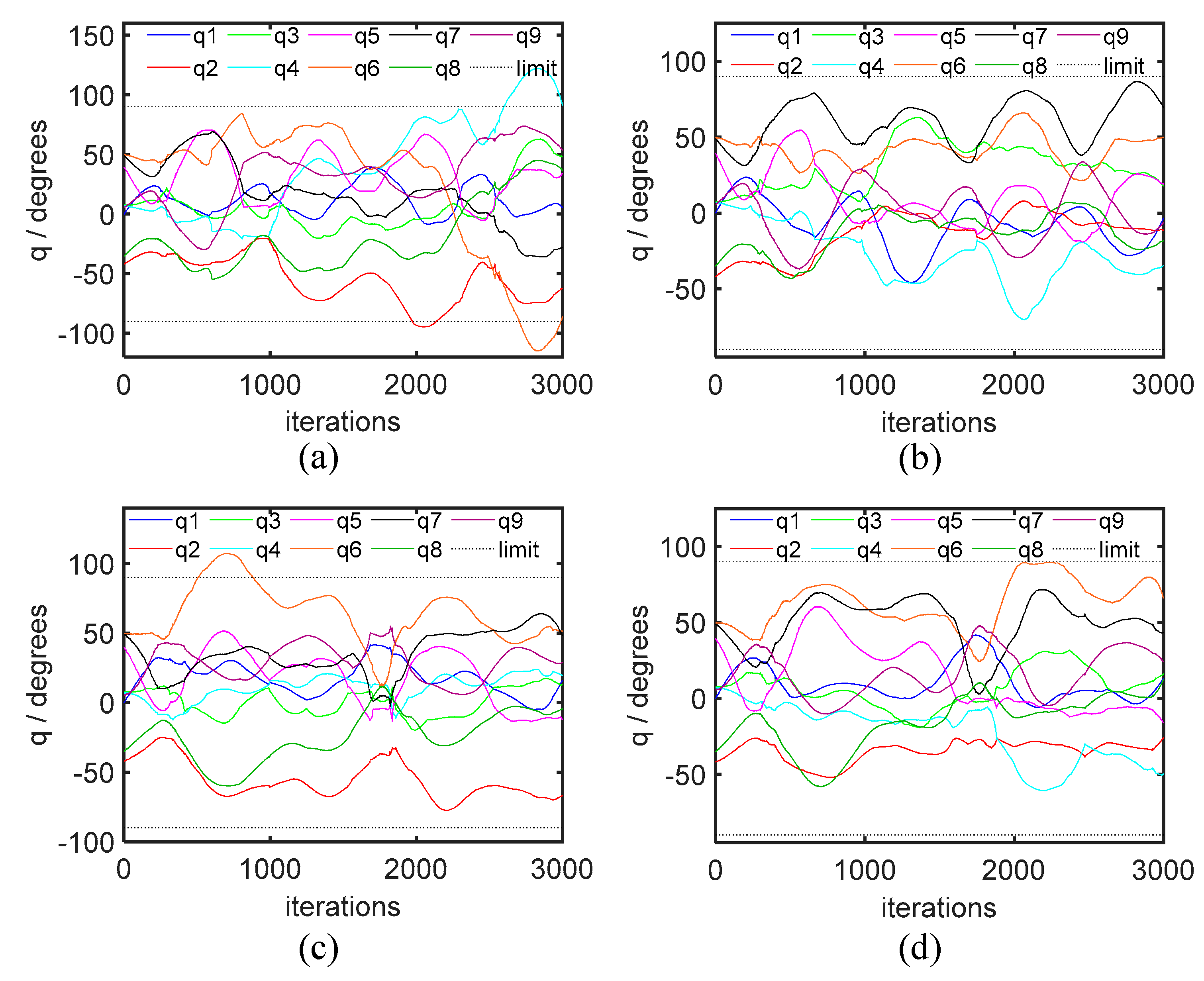
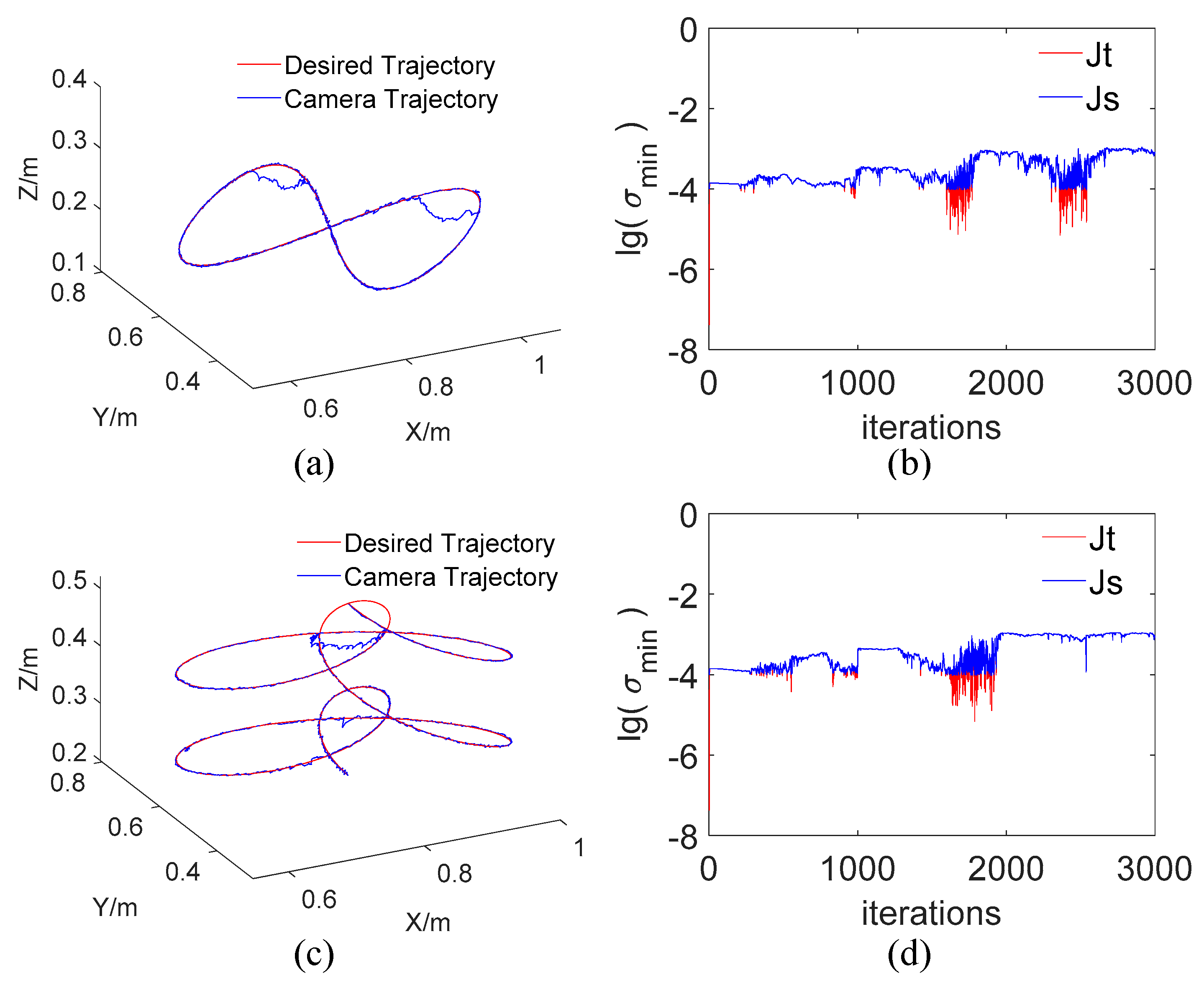
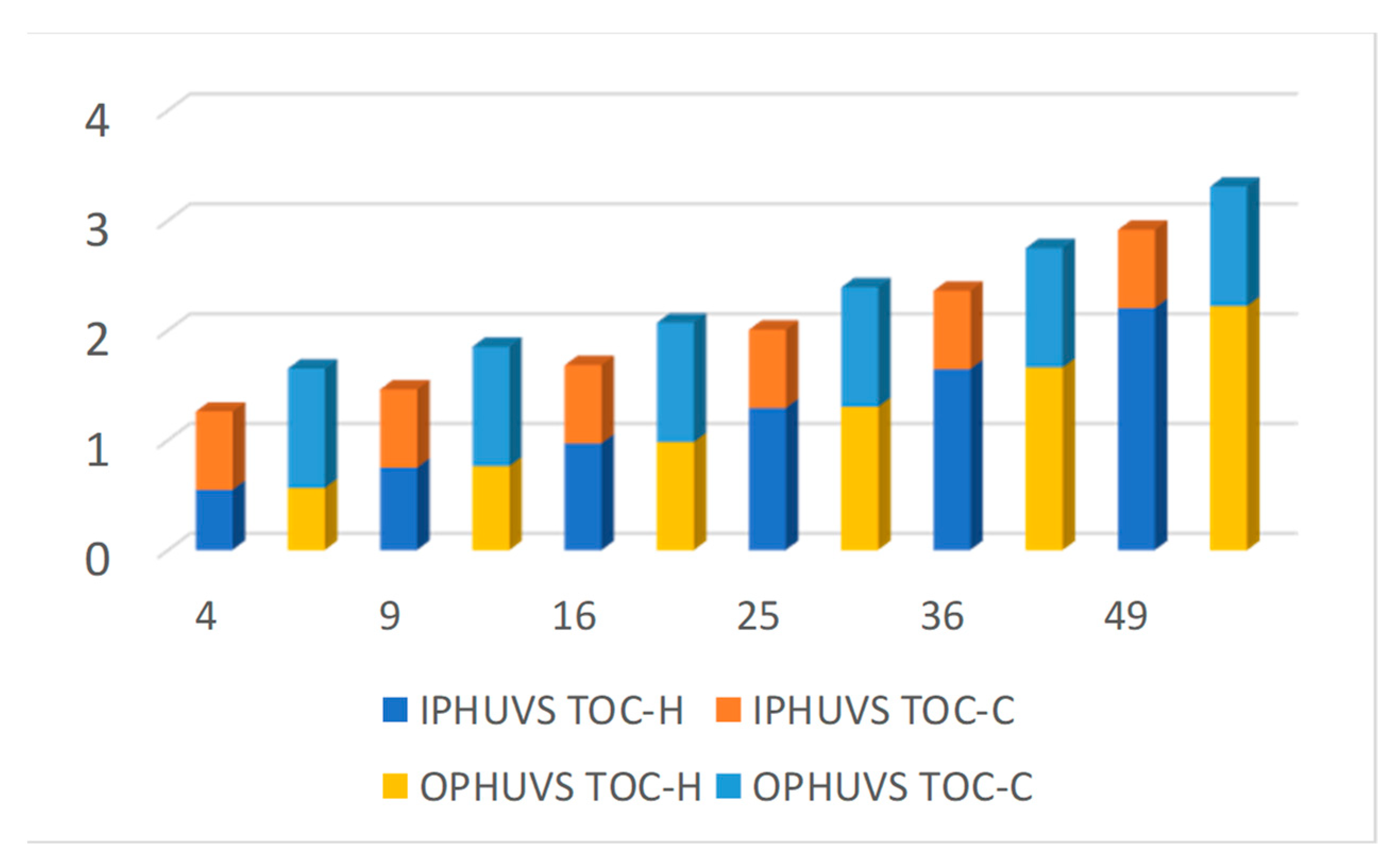
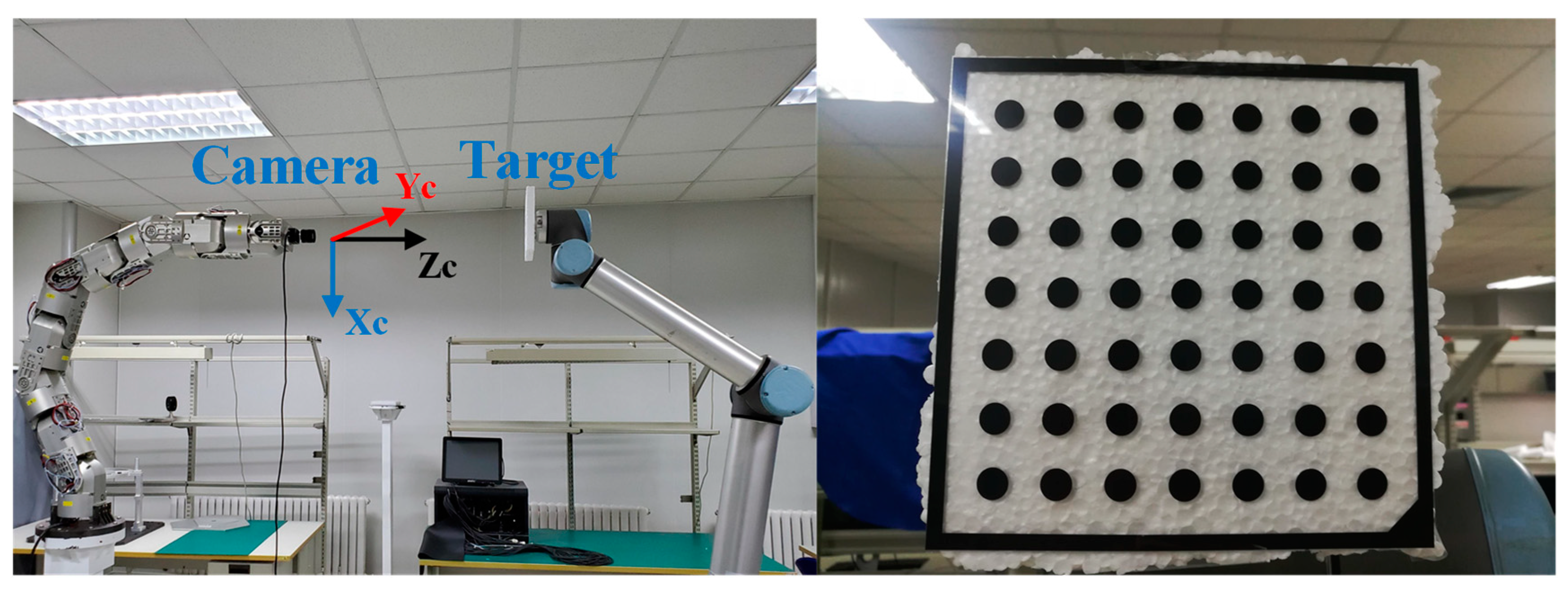
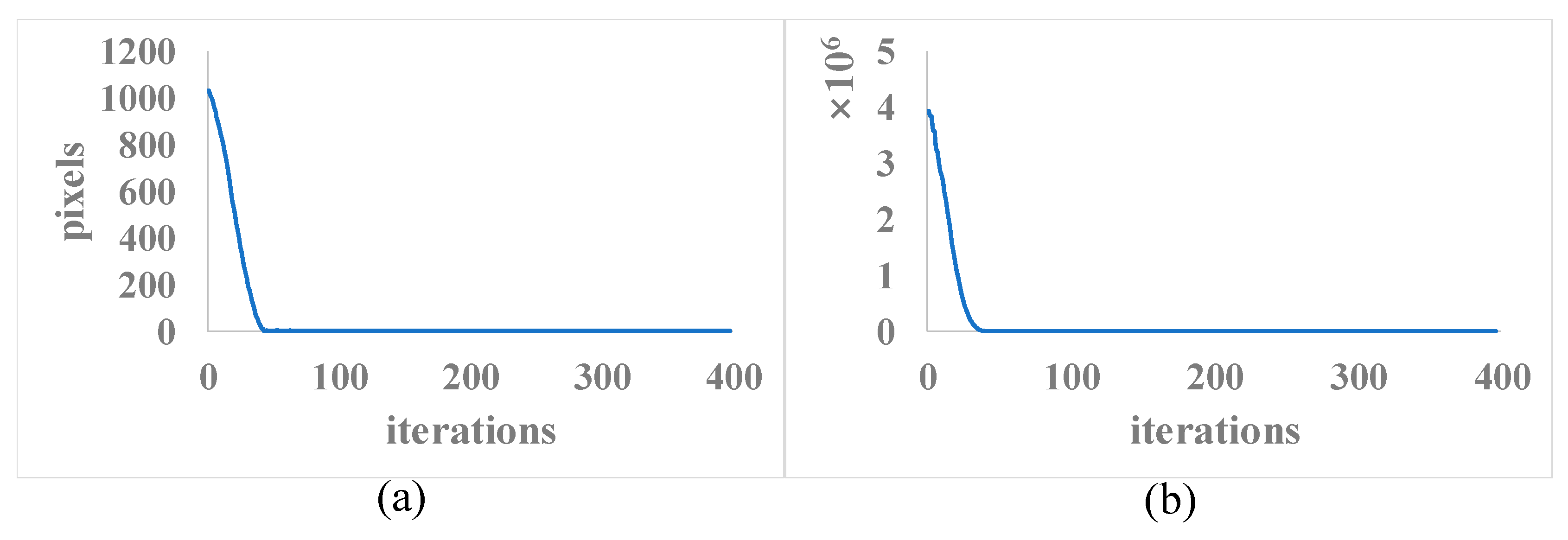
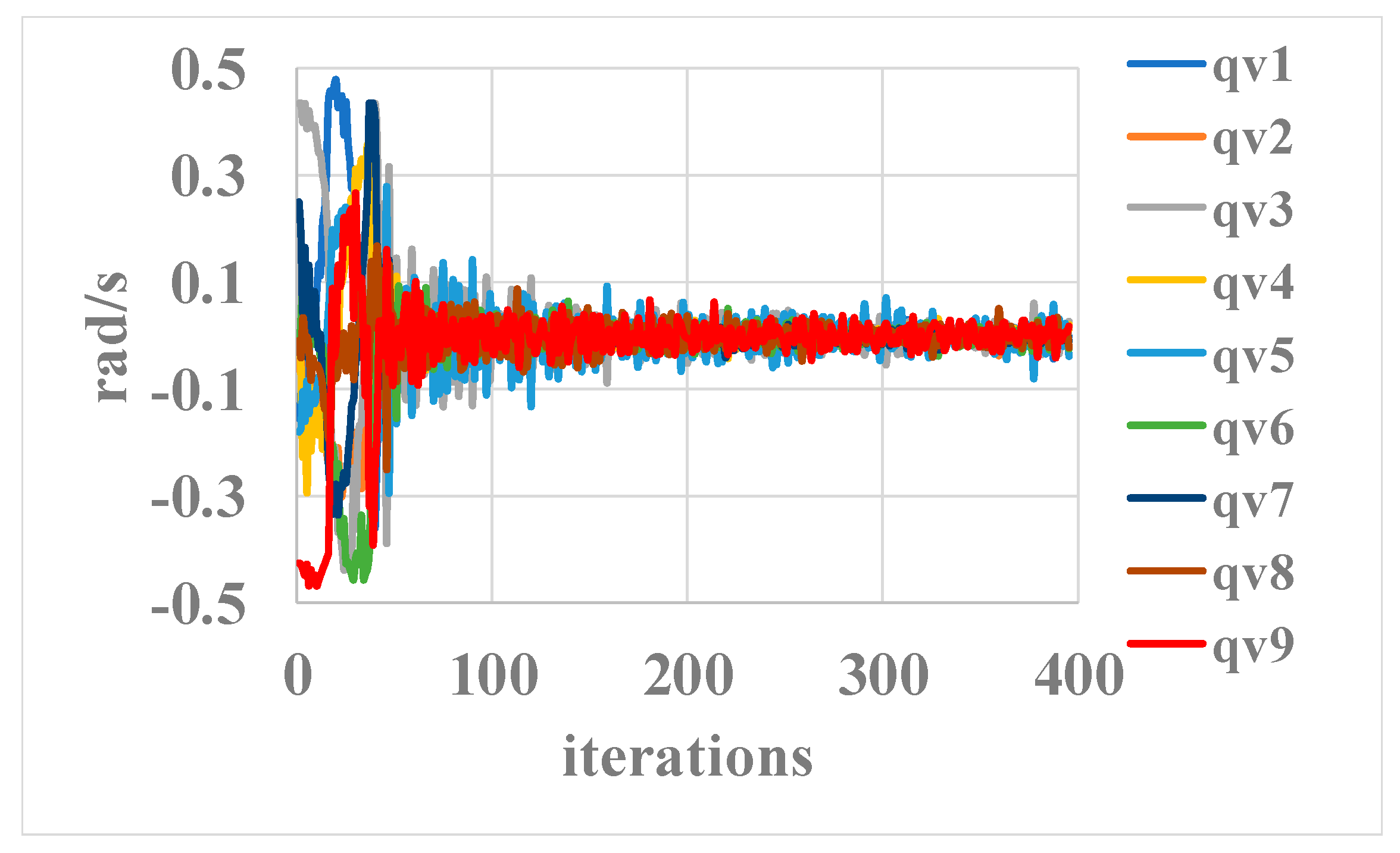
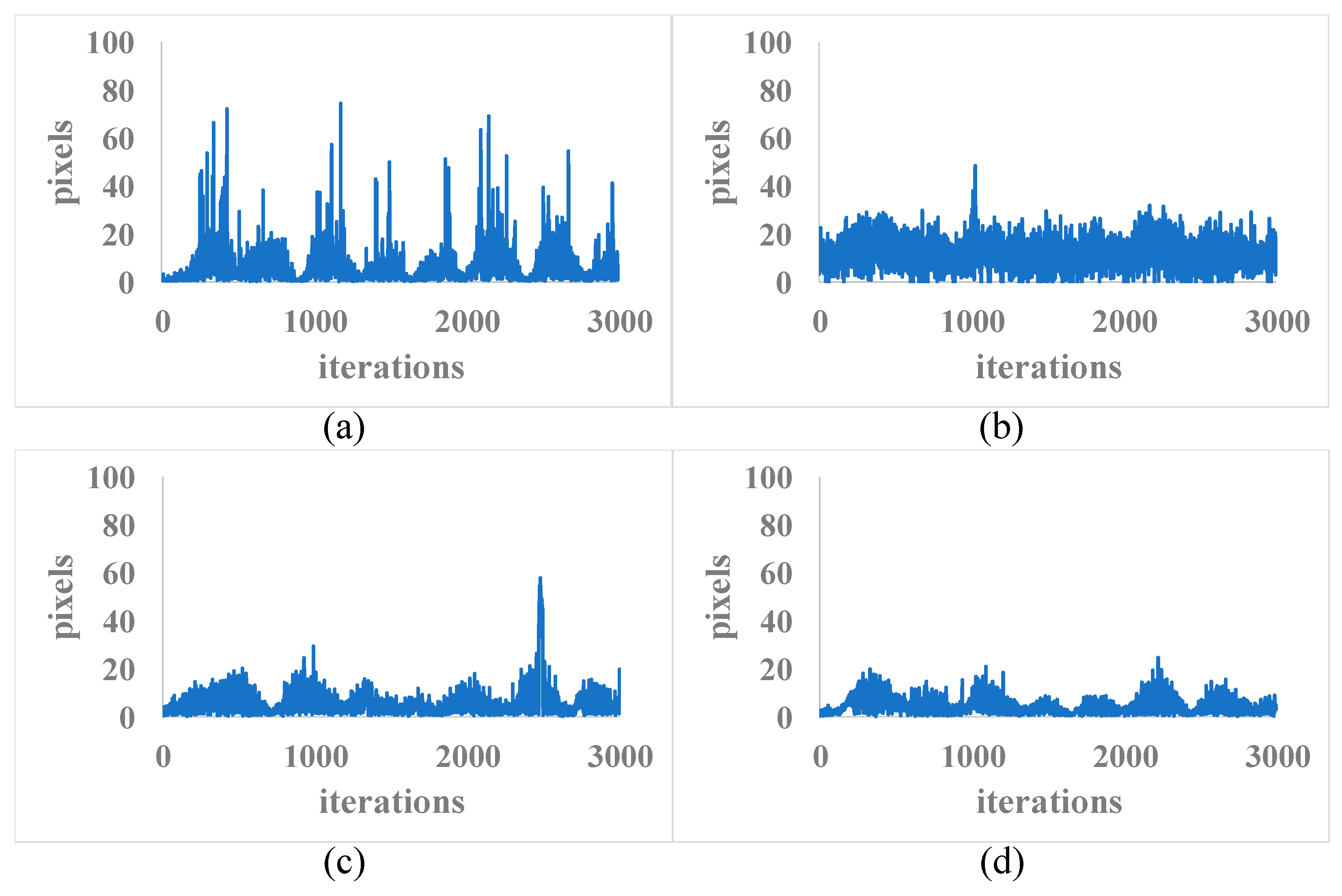
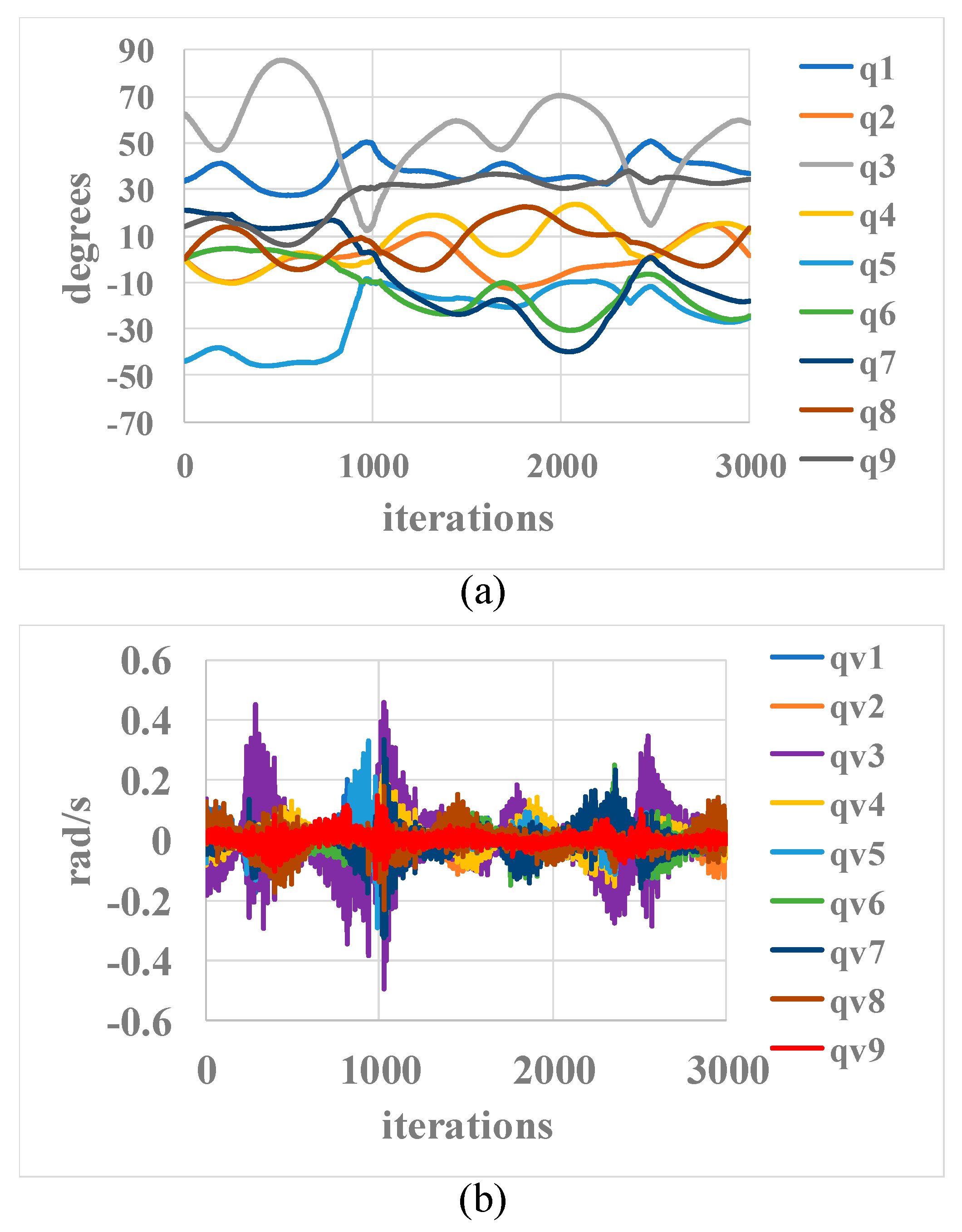
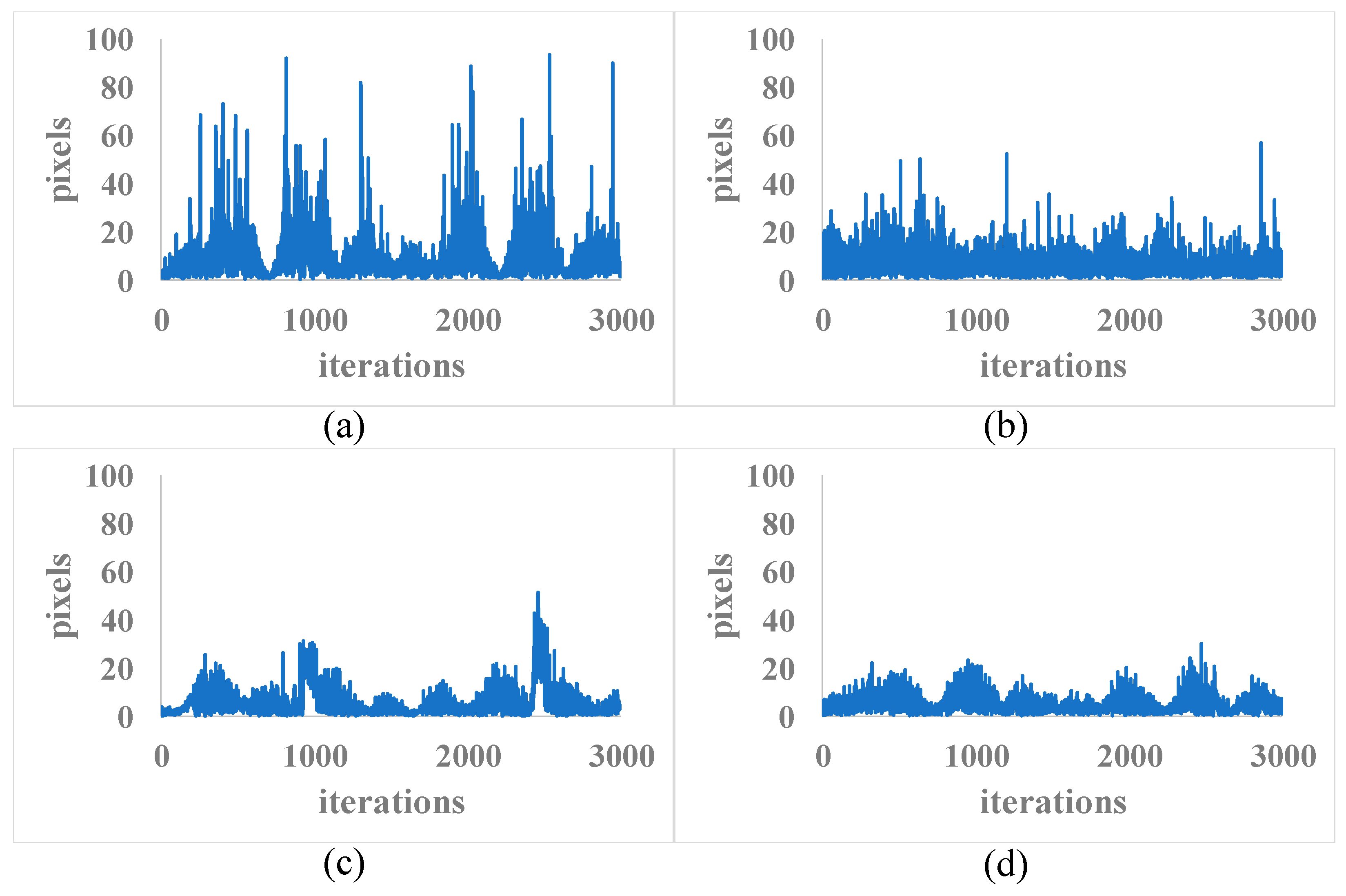
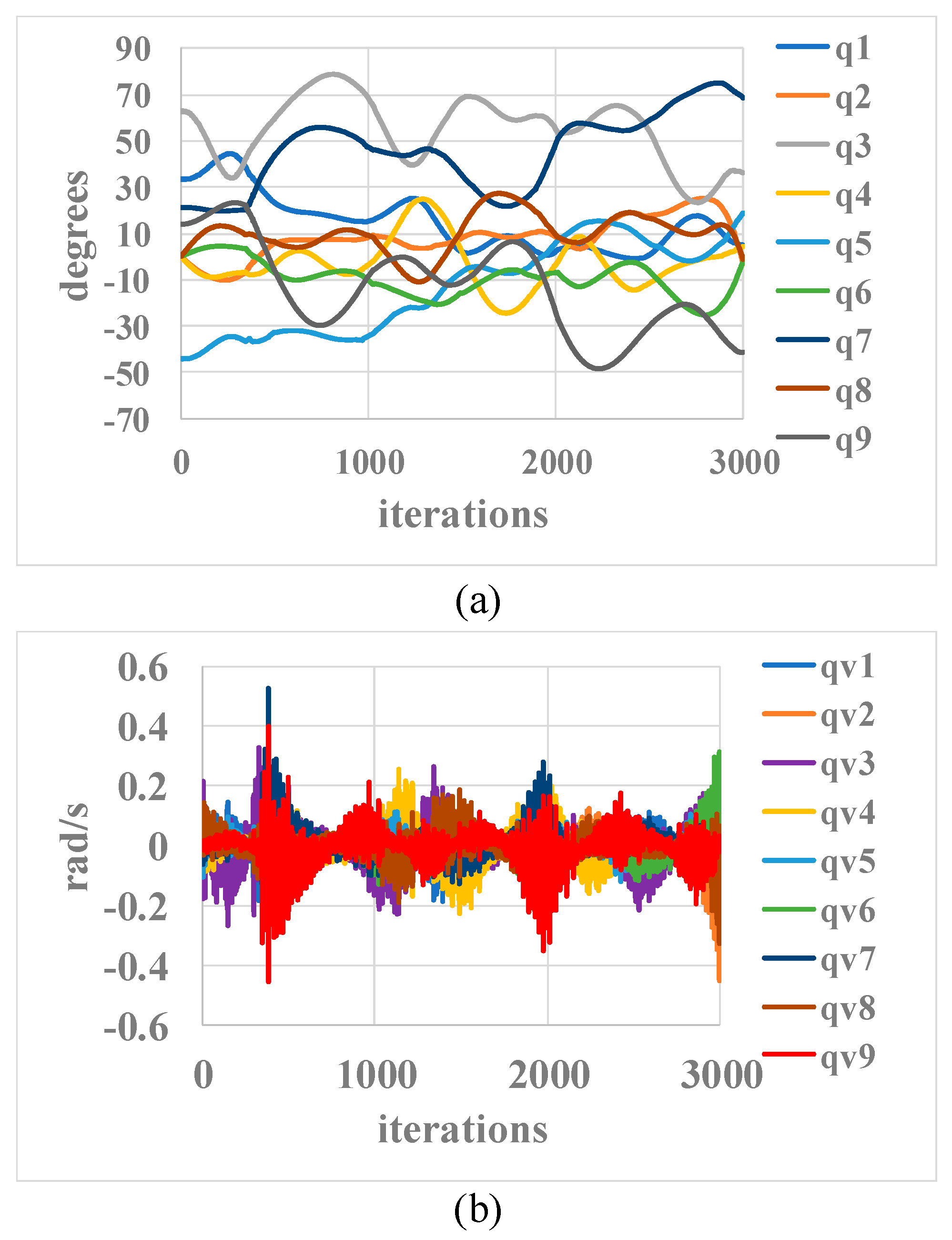
| Joint | Joint Limit | ||||
|---|---|---|---|---|---|
| 1 | q1 | 0 | 0 | 0 | ±90° |
| 2 | q2 | 90° | 165.5 | 0 | ±90° |
| 3 | q3 | −90° | 165.5 | 0 | ±90° |
| 4 | q4 | 90° | 165.5 | 0 | ±90° |
| 5 | q5 | −90° | 165.5 | 0 | ±90° |
| 6 | q6 | 90° | 165.5 | 0 | ±90° |
| 7 | q7 | −90° | 165.5 | 0 | ±90° |
| 8 | q8 | 90° | 165.5 | 0 | ±90° |
| 9 | q9 | −90° | 165.5 | 0 | ±90° |
| Task | Method | Noise Mean | ||||||||
|---|---|---|---|---|---|---|---|---|---|---|
| Pure Translation | IBUVS | 0.425 | 0.014 | 1.121 | 0.823 | 0.032 | 4.541 | 1.225 | 0.067 | 6.346 |
| OPHUVS | 0.183 | 0.004 | 0.991 | 0.302 | 0.017 | 2.453 | 0.395 | 0.031 | 3.637 | |
| KF | 0.181 | 0.004 | 0.987 | 0.289 | 0.015 | 2.278 | 0.379 | 0.029 | 3.308 | |
| KF-SVSF | 0.174 | 0.004 | 0.886 | 0.273 | 0.015 | 2.052 | 0.364 | 0.029 | 3.081 | |
| Pure Rotation | IBUVS | 0.341 | 0.023 | 1.427 | 0.537 | 0.045 | 5.253 | 0.873 | 0.069 | 7.641 |
| OPHUVS | 0.126 | 0.004 | 0.932 | 0.268 | 0.016 | 2.466 | 0.385 | 0.034 | 3.826 | |
| KF | 0.124 | 0.004 | 0.929 | 0.251 | 0.015 | 2.349 | 0.374 | 0.031 | 3.527 | |
| KF-SVSF | 0.117 | 0.003 | 0.906 | 0.242 | 0.014 | 2.235 | 0.304 | 0.029 | 3.174 | |
| General Motion | IBUVS | 0.374 | 0.029 | 1.435 | 0.911 | 0.049 | 6.213 | 1.352 | 0.072 | 8.214 |
| OPHUVS | 0.187 | 0.006 | 0.813 | 0.261 | 0.018 | 2.716 | 0.406 | 0.033 | 3.826 | |
| KF | 0.185 | 0.006 | 0.811 | 0.243 | 0.017 | 2.529 | 0.394 | 0.032 | 3.672 | |
| KF-SVSF | 0.169 | 0.006 | 0.798 | 0.228 | 0.015 | 2.482 | 0.363 | 0.031 | 3.396 | |
| Path | Method | Noise Mean | ||
|---|---|---|---|---|
| MSE | MSE | MSE | ||
| Double leaf rose | IBUVS | 4.97 | 8.54 | 11.47 |
| OPHUVS | 3.94 | 5.21 | 7.56 | |
| IPHUVS with KF | 2.59 | 3.84 | 5.54 | |
| IPHUVS with KF-SVSF | 2.37 | 3.56 | 5.31 | |
| Triple leaf rose | IBUVS | 5.12 | 8.96 | 11.67 |
| OPHUVS | 3.91 | 5.13 | 7.48 | |
| IPHUVS with KF | 2.66 | 3.75 | 5.62 | |
| IPHUVS with KF-SVSF | 2.43 | 3.47 | 5.39 | |
| Number of Feature Points | IPHUVS | OPHUVS | ||||
|---|---|---|---|---|---|---|
| TOC-H | TOC-C | Total | TOC-H | TOC-C | Total | |
| 4 | 0.5486 | 0.8109 | 1.3595 | 0.5624 | 1.0891 | 1.6515 |
| 9 | 0.7504 | 0.8109 | 1.5613 | 0.7608 | 1.0892 | 1.85 |
| 16 | 0.9712 | 0.8109 | 1.7821 | 0.9804 | 1.0892 | 2.0696 |
| 25 | 1.2942 | 0.8108 | 2.105 | 1.3022 | 1.0891 | 2.3913 |
| 36 | 1.6472 | 0.8107 | 2.4579 | 1.6591 | 1.0892 | 2.7483 |
| 49 | 2.2026 | 0.8108 | 3.0134 | 2.2176 | 1.0893 | 3.3069 |
| Method | |||
|---|---|---|---|
| IBUVS | 1.08 | 0.023 | 4.14 |
| OPHUVS | 0.96 | 0.012 | 2.81 |
| IPHUVS with KF | 0.91 | 0.012 | 2.76 |
| IPHUVS with KF-SVSF | 0.72 | 0.011 | 2.59 |
| Path | Double Leaf Rose | Triple Leaf Rose | |
|---|---|---|---|
| Method | |||
| IBUVS | 9.43 | 10.19 | |
| OPHUVS | 7.32 | 7.74 | |
| IPHUVS with KF | 6.28 | 6.61 | |
| IPHUVS with KF-SVSF | 5.61 | 5.89 | |
© 2020 by the authors. Licensee MDPI, Basel, Switzerland. This article is an open access article distributed under the terms and conditions of the Creative Commons Attribution (CC BY) license (http://creativecommons.org/licenses/by/4.0/).
Share and Cite
Gu, J.; Zhu, M.; Cao, L.; Li, A.; Wang, W.; Xu, Z. Improved Uncalibrated Visual Servo Strategy for Hyper-Redundant Manipulators in On-Orbit Automatic Assembly. Appl. Sci. 2020, 10, 6968. https://doi.org/10.3390/app10196968
Gu J, Zhu M, Cao L, Li A, Wang W, Xu Z. Improved Uncalibrated Visual Servo Strategy for Hyper-Redundant Manipulators in On-Orbit Automatic Assembly. Applied Sciences. 2020; 10(19):6968. https://doi.org/10.3390/app10196968
Chicago/Turabian StyleGu, Jinlin, Mingchao Zhu, Lihua Cao, Ang Li, Wenrui Wang, and Zhenbang Xu. 2020. "Improved Uncalibrated Visual Servo Strategy for Hyper-Redundant Manipulators in On-Orbit Automatic Assembly" Applied Sciences 10, no. 19: 6968. https://doi.org/10.3390/app10196968
APA StyleGu, J., Zhu, M., Cao, L., Li, A., Wang, W., & Xu, Z. (2020). Improved Uncalibrated Visual Servo Strategy for Hyper-Redundant Manipulators in On-Orbit Automatic Assembly. Applied Sciences, 10(19), 6968. https://doi.org/10.3390/app10196968






